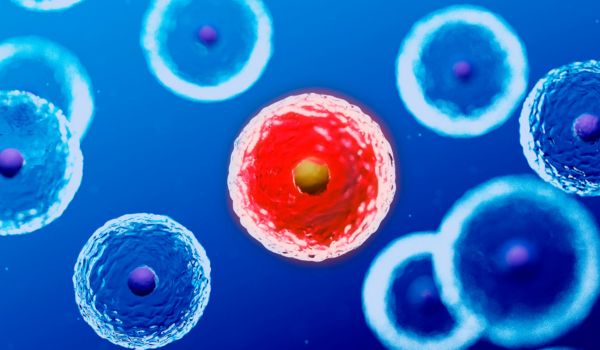The promising field of regenerative medicine emerges at the intersection of science and creative genius. This field is expanding rapidly and has the prospect of game-changing therapies that could significantly impact the future of medicine and public health. This article will highlight recent advances in regenerative medicine.
Contents
Exploring the Essence of Regenerative Medicine
As a shining example in the large medical environment, regenerative medicine provides answers that go beyond conventional therapy and facilitate full recovery. The primary tenet of this practice is faith in the body’s natural capacity for repair and renewal. By capitalizing on this opportunity, regenerative medicine works to develop methods that can restore function to injured tissues and organs. This focus on healing contrasts sharply with the treatment of symptoms in conventional medicine.
Principles from cell biology, tissue engineering, and molecular science underpin this research area. In this scenario, degenerative diseases that were thought to be terminal are slowed or even reversed. As we delve further into its complexities, regenerative medicine promises to bring medical marvels.
Pure Regenerative Medicine: Core Principles
The word “pure” regenerative medicine conveys an image of undiluted concentration on maximizing the body’s natural ability to heal itself within the vast realm of medical research. The term “pure” refers to the use of all-natural, non-synthetic ingredients and excludes any pharmacological or chemical treatments. Utilizing life’s own unprocessed components, like stem cells and growth hormones, to promote restoration and rejuvenation is at the heart of this approach.

Although there are many techniques that can be used in regenerative medicine as a whole, from bioengineered tissues to exogenous stimulants, true regenerative medicine always returns to the tools that nature provides. Bypassing hybrid approaches that may mix conventional medicine with regenerative medicine, this approach puts all the emphasis on the body’s own healing mechanisms.
Pure regenerative medicine must be understood in its own right in order to be distinguished from related topics. By contrast, pure regenerative medicine may encourage the body to regenerate damaged structures on its own without the aid of artificial scaffolds created by tissue engineering. Pure regenerative treatments prioritize endogenous, unmodified components, while other therapeutic methods may include synthetic or externally controlled elements in the body.
New Life Regenerative Medicine: A Glimpse into the Future
When it comes to health care, “New Life Regenerative Medicine” represents the pinnacle of cutting-edge thinking because of the way it fuses conventional wisdom with bold experimentation. There have been a number of exciting breakthroughs in this area of regenerative medicine as we progress through the 21st century, creating a story of promise and renewal.

The potential for organ regeneration is at the forefront of these developments. If the body’s latent regeneration abilities could be reactivated, then injured organs like the heart and liver wouldn’t need to be replaced. Investigation of relevant signalling mechanisms and stem cell habitats may one day make this vision a reality. Neuroregeneration is another area where progress has been made because of innovative treatments that aim to restore neural connections, giving hope to people who have suffered from spinal cord injuries or degenerative neurological disorders.
“New Life Regenerative Medicine” has a wide range of possible uses and benefits for patients. In addition to the apparent benefits to health, it also has the potential to greatly speed up the process of organ transplants. In addition, treatments that make use of the body’s natural healing processes may be safer and less invasive than current medical practices. This medical approach may also be useful in preventing and treating age-related decline, which could improve both health and longevity.
Types of Regenerative Medicine
The vast and varied field of regenerative medicine encompasses many approaches, each of which is ripe with potential and promise. While all modalities aim to restore health and well-being, they all approach this task in different ways and can be used to treat a lot of degenerative diseases.
- Stem Cell Therapies: Stem cells, which are able to differentiate into several cell types, play a pivotal role in the regenerative story. Their therapeutic potential is enormous since they provide new ways to replace dysfunctional cells like neurons and cardiomyocytes. However, there are several difficulties associated with using them. Embryonic stem cells raise unique ethical questions because of their ability to give rise to tumours and other malignancies.
- Tissue Engineering: The field of tissue engineering brings together scientific theory with technological advancements. With the help of scaffolds injected with cells and growth hormones, this field strives to create functioning tissues. The replacement or restoration of injured tissues is made possible by these bioengineered constructs, which range from skin grafts for burn sufferers to possible organ constructs for transplantation.
- Clinical Translation: Clinical translation is the field that bridges the gap between scientific advances in the lab and the beds of patients. This method guarantees that medical breakthroughs become secure and effective medicines. It involves exhaustive testing, navigating regulatory hurdles, and deliberate scaling to guarantee the safety and efficacy of innovative regeneration techniques in clinical settings.
- Molecular Interventions: Molecular interventions are crucial at the subcellular level. These methods encourage the body’s natural repair processes by influencing particular chemicals or signalling pathways. Molecular therapies provide nuanced, focused ways to improve the body’s innate healing capacities, such as by boosting angiogenesis in ischemic areas or moderating inflammatory responses.

Conclusion
With its many novel techniques, regenerative medicine is on the edge of a new age in medicine. As we contemplate its vastness, the balance between age-old knowledge and cutting-edge inventions becomes clear. This ever-evolving field, driven by dogged investigation and far-sighted insight, holds the potential to do more than just treat and transform. The ability to repair, revitalize, and even regenerate has far-reaching consequences for the future of healthcare, providing hope where there may have been resignation before.
At this crossroads, we can see the progress that has been accomplished and the unexplored territory that lies ahead, but one thing is certain: the panorama of regenerative medicine, with all its obstacles and successes, portends a better, more healing future for all of humankind.



